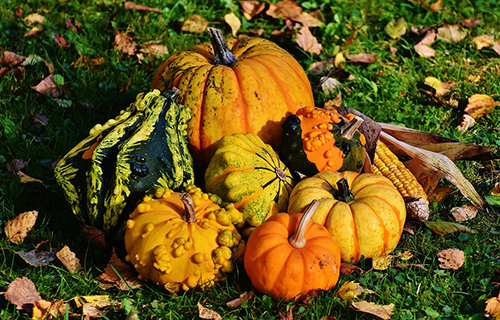How to choose from seven easy-to-find types of squash.
Although available all year, winter squash is best enjoyed during harvest season—late summer through early winter. All varieties of delicious winter squash are packed with the antioxidants alpha and beta carotene. Here you’ll find some tips on what varieties to look for and how to choose them.
Shopping Tips
Choose squash that is very hard: press firmly all over to make sure the rind isn’t soft (a sign of immaturity or improper storage.) During harvest season, look for vivid colors—the skin color should not look washed out. Later in the year, after the squash has been stored, the skin color may fade as the flesh becomes sweeter. Regardless of the season, the skin should not look shiny—a sign that it’s either underripe or that it’s waxed, possibly masking bad quality. Choose squash with a remnant of the dried-out stem still attached, like a small knob at one end. A missing stem can be a sign of mold and bacteria growth inside.
Storage Tips
Store squash in a cool spot with good air circulation (not the refrigerator, but a cool pantry or cellar) for up to a month. If you buy precubed squash at your market, make sure the pieces are dry, firm and vivid in color. Avoid those that look wet or desiccated with sunken striations in the flesh.
Varieties
Look for any of these varieties at the market.
Acorn: A moderately sized variety almost always available in supermarket bins, even in the summer. The flesh can be watery; prolonged cooking concentrates the flavor.
Buttercup: An old-fashioned squash with a characteristic little cap at the stem. Full of natural sugars and fiber, it’s a delectable treat in midwinter.
Butternut: Perhaps the most versatile winter squash, sweet and light when cooked but also substantial—and thus able to stand up to both long cooking and quick sautés.
Hubbard: Available in blue or gold varieties with somewhat warty skins. Ranges in size from 5 to 40 pounds; perfect cubed and roasted or for purees.
Kabocha: A name for a set of squash varietals from Japan with consistently deep, honey-scented flavors.
Red Kuri: Now sometimes called “red curry,” a relative of the kabocha with many seeds, less meat and with a deep, pear-scented taste.
Spaghetti Squash: Oblong and mild in flavor, when cooked its flesh yields myriad threads, sort of like little spaghetti strands, best removed with a fork.
